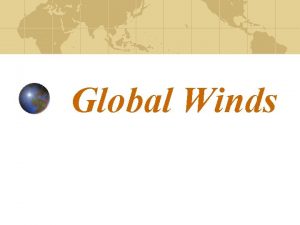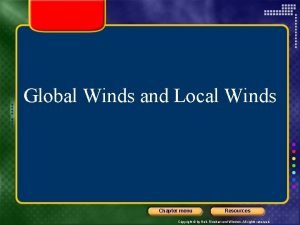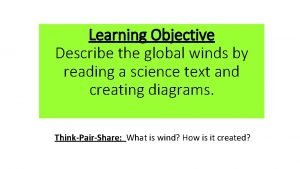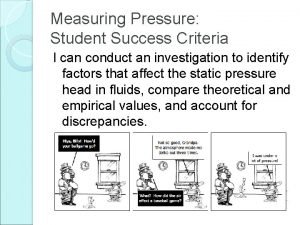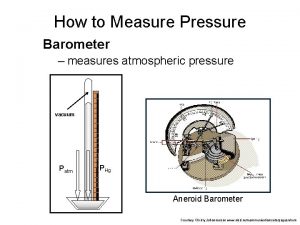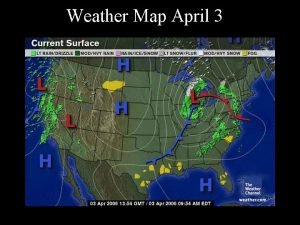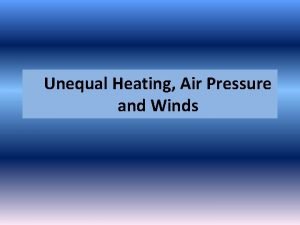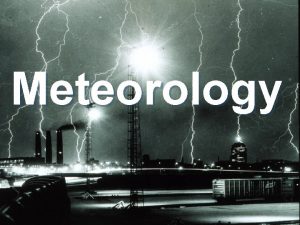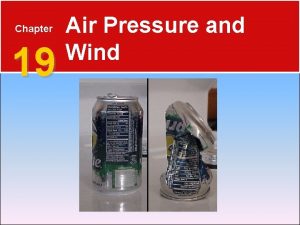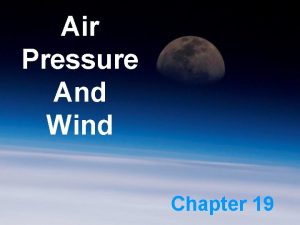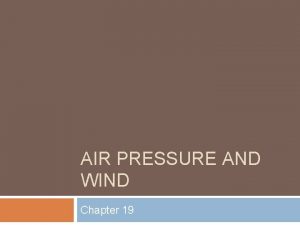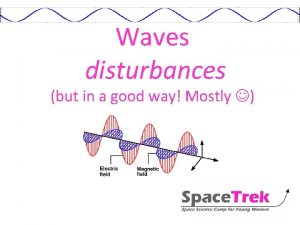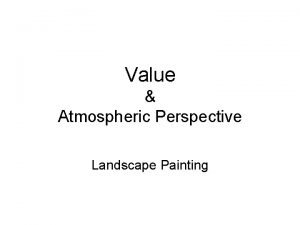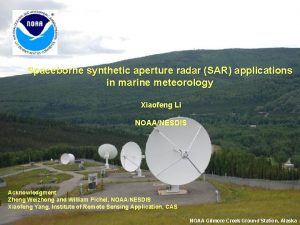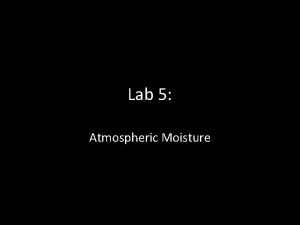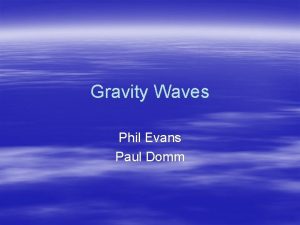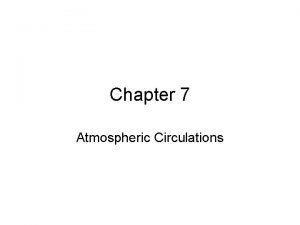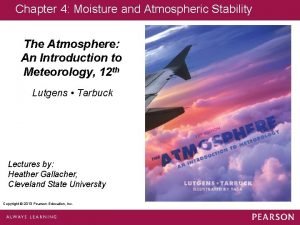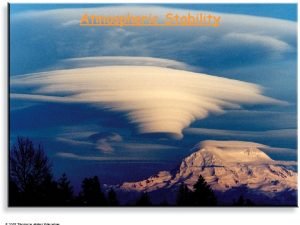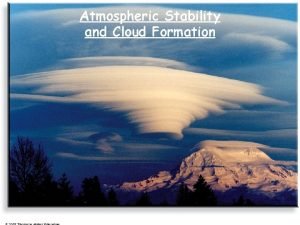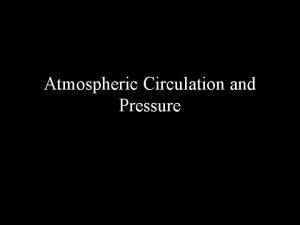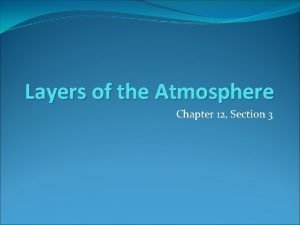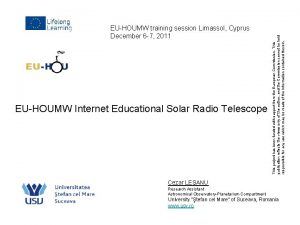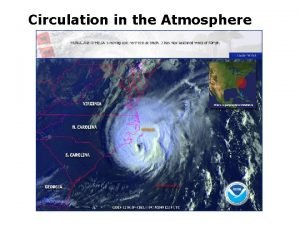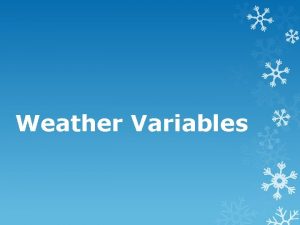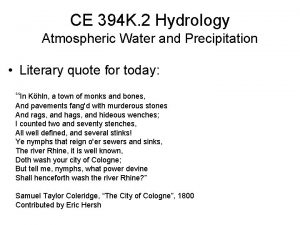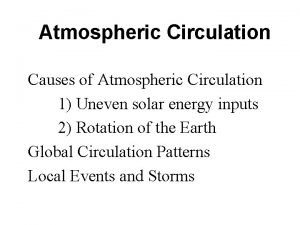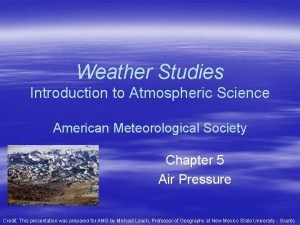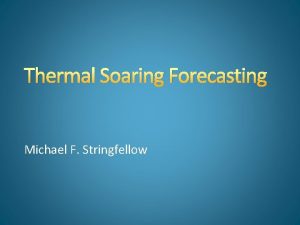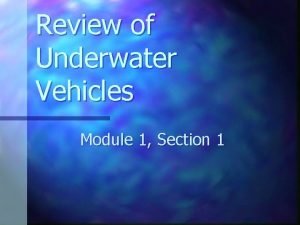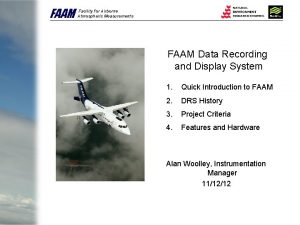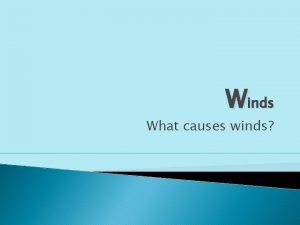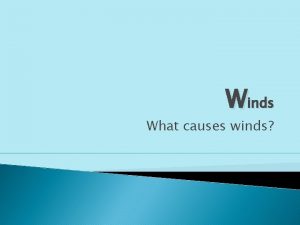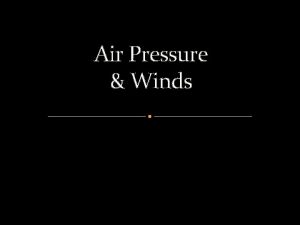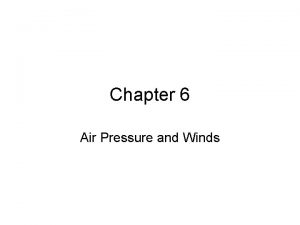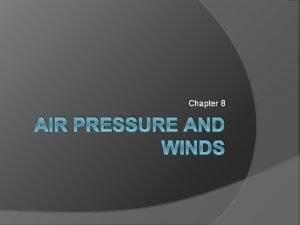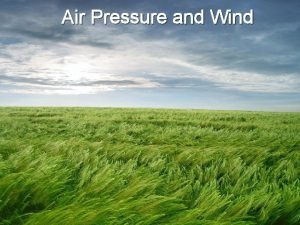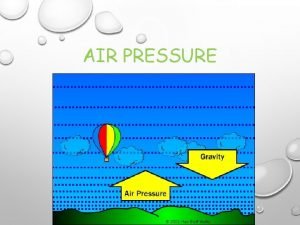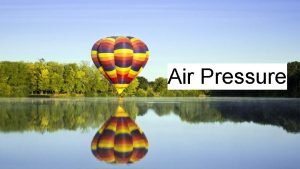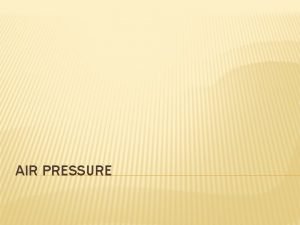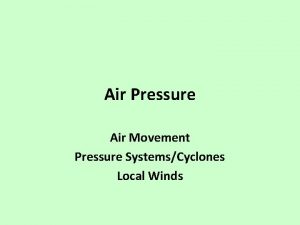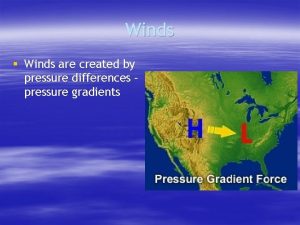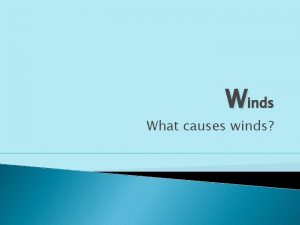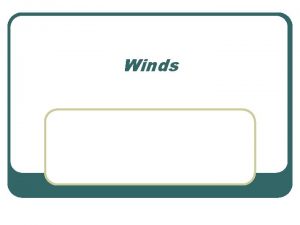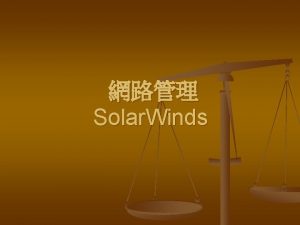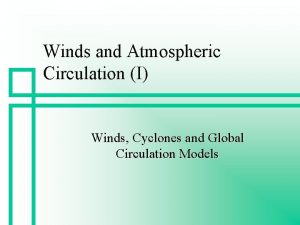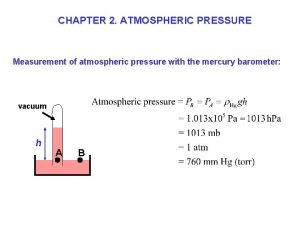Chapter 8 AIR PRESSURE AND WINDS Atmospheric Pressure


















































- Slides: 50


Chapter 8 AIR PRESSURE AND WINDS

Atmospheric Pressure • What causes air pressure to change in the horizontal? • Why does the air pressure change at the surface?

Atmospheric Pressure • Horizontal Pressure Variations – It takes a shorter column of dense, cold air to exert the same pressure as a taller column of less dense, warm air – Warm air aloft is normally associated with high atmospheric pressure and cold air aloft with low atmospheric pressure – At surface, horizontal difference in temperature = horizontal pressure in pressure = wind



Atmospheric Pressure • Special Topic: Gas Law P is proportional to T x ρ P = pressure T = temperature ρ = density

Atmospheric Pressure • Daily Pressure Variations – Thermal tides in the tropics – Mid-latitude pressure variation driven by transitory pressure cells • Pressure Measurements – Barometer, barometric pressure • Standard atmospheric pressure 1013. 25 mb – Aneroid barometers • Altimeter, barograph






Atmospheric Pressure • Pressure Readings – Instrument error: temperature, surface tension – Altitude corrections: high altitude add pressure, 10 mb/100 m above sea level


Surface and Upper Level Charts • Sea-level pressure chart: constant height • Upper level or isobaric chart: constant pressure surface (i. e. 500 mb) – High heights correspond to higher than normal pressures at a given latitude and vice versa








Surface and Upper Level Charts • Observation: Constant Pressure Surface – Pressure altimeter in an airplane causes path along constant pressure not elevation – May cause sudden drop in elevation – Radio altimeter offers constant elevation

Newton’s Law of Motion • AN object at rest will remain at rest and an object in motion will remain in motion as long as no force is executed on the object. • The force exerted on an object equals its mass times the acceleration produced. – Acceleration: speeding up, slowing down, change of direction of an object.

Forces that Influence Winds • Pressure Gradient Force: difference in pressure over distance – Directed perpendicular to isobars from high to low. – Large change in pressure over s short distance is a strong pressure gradient and vice versa. – The force that causes the wind to blow.





Forces that Influence Winds • Coriolis Force – Apparent deflection due to rotation of the Earth – Right in northern hemisphere and left in southern hemisphere – Stronger wind = greater deflection – No Coriolis effect at the equator greatest at poles. – Only influence direction, not speed – Only has significant impact over long distances




Forces that Influence Winds • Geostrophic Winds – Earth turning winds – Travel parallel to isobars – Spacing of isobars indicates speed; close = fast, spread out = slow • Topic: Math & Geostrophic Winds Vg = 1 x Δp fρ d




Forces that Influence Winds • Gradient Winds Aloft – Cyclonic: counterclockwise – Anticyclonic: clockwise – Gradient wind parallel to curved isobars – Cyclostrophic near Equator • Observation: Estimates Aloft – Clouds indicate direction of winds, place pressure in location consistent with cloud location.





Stepped Art Fig. 8 -29, p. 214

Forces that Influence Winds • Winds on Upper-level Charts – Winds parallel to contour lines and flow west to east – Heights decrease from north to south • Surface Winds – Friction reduces the wind speed which in turn decrease the Coriolis effect. – Winds cross the isobars at about 30° into low pressure and out of high pressure – Buys-Ballots Law




Winds and Vertical Motion • Replacement of lateral spreading of air results in the rise of air over a low pressure and subsidence over high pressure • Hydrostatic equilibrium and equation • Topic: Hydrostatic equation Δp = -ρg Δz

 Local and global winds
Local and global winds Which blow over long distances?
Which blow over long distances? Global wind belts
Global wind belts Local winds are caused by
Local winds are caused by Nullschool global wind
Nullschool global wind Pressure at different altitudes
Pressure at different altitudes Pressure head definition
Pressure head definition Barometer measures
Barometer measures Tiefdruckgebiet
Tiefdruckgebiet Atmospheric pressure in complete denture
Atmospheric pressure in complete denture Mapline of atmospheric pressure
Mapline of atmospheric pressure Measure air temperature and measure air pressure
Measure air temperature and measure air pressure Air higroskopis adalah
Air higroskopis adalah A swirling center of low air pressure is called
A swirling center of low air pressure is called High pressure winds
High pressure winds High pressure winds
High pressure winds High pressure winds
High pressure winds Sea breeze usually originates during the
Sea breeze usually originates during the Chapter 19 air pressure and wind
Chapter 19 air pressure and wind Air pressure
Air pressure Chapter 12 air section 1
Chapter 12 air section 1 Chapter 12 air section 1 what causes air pollution
Chapter 12 air section 1 what causes air pollution Atmospheric opacity
Atmospheric opacity Atmospheric perspective landscape
Atmospheric perspective landscape Atmospheric diving system
Atmospheric diving system Atmospheric gravity waves
Atmospheric gravity waves Penn state university meteorology
Penn state university meteorology Lab 5 atmospheric moisture
Lab 5 atmospheric moisture Forceparcel
Forceparcel Single cell model of atmospheric circulation
Single cell model of atmospheric circulation Atmospheric stability
Atmospheric stability Define unstable equilibrium
Define unstable equilibrium Conditionally unstable atmosphere
Conditionally unstable atmosphere Circulates air between 60-90 latitudes
Circulates air between 60-90 latitudes Atmospheric heaven
Atmospheric heaven The four main layers of the atmosphere
The four main layers of the atmosphere Atmospheric opacity
Atmospheric opacity Atmospheric circulation
Atmospheric circulation Atmospheric distortion correction
Atmospheric distortion correction Atmospheric weather variables
Atmospheric weather variables Atmosphere
Atmosphere Biomes
Biomes Dr tatiana erukhimova
Dr tatiana erukhimova Atmospheric convection
Atmospheric convection Atmospheric convection
Atmospheric convection Atmospheric convection
Atmospheric convection Weather studies introduction to atmospheric science
Weather studies introduction to atmospheric science Regional atmospheric soaring prediction
Regional atmospheric soaring prediction Atmospheric diving suit
Atmospheric diving suit Lightning elves
Lightning elves Facility for airborne atmospheric measurements
Facility for airborne atmospheric measurements


